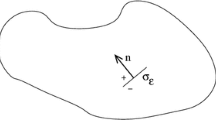Abstract
The aim of this paper is to show that basic morphological operations can be incorporated within a statistical physics formulation as a limit when the temperature of the system tends to zero. These operations can then be expressed in terms of finding minimum-variance estimators of probability distributions. It enables us to relate these operations to alternative Bayesian or Markovian approaches to image analysis.
We first show how to derive elementary dilations (winner-take-all) and erosions (loser-take-all). These operations, referred to as statistical dilations and erosion, depend on a temperature parameter β=1/T. They become purely morphological as β goes to infinity and become purely linear averages as β goes to zero. Experimental results are given for a range of intermediate values of β. Concatenations of elementary operations can be naturally expressed by stringing together conditional probability distributions, each corresponding to the original operations, thus yielding statistical openings and closings. Techniques are given for computing the minimum-variance estimators. Finally, we describe simulations comparing statistical morphology and Bayesian methods for image smoothing, edge detection, and noise reduction.
Similar content being viewed by others
References
G. Matheron, Random Sets and Integral Geometry, Wiley, New York, 1975.
J. Serra, Image Analysis and Mathematical Morphology, Academic Press, London, 1982.
S. Geman and D. Geman, “Stochastic relaxation, Gibbs Distributions and the Bayesian Restoration of Images,” IEEE Trans. Patt. Anal. Mach. Intell., vol. 6, 1984, pp. 721–741.
L. Vincent, “New Trends in Morphological Algorithms,” Proc. Soc. Photo-Opt. Instrum. Engrg., vol. 91, 1991, pp. 000-000.
A. Blake, “The Least Disturbance Principle and Weak Constraints,” Patt. Recog. Let., vol. 1, 1983, pp. 393–399.
D. Geiger and F. Girosi, “Parallel and Deterministic Algorithms from MRFs: Integration and surface reconstruction,” IEEE Trans. Patt. Anal. Mach. Intell., vol. PAHI-13, 1991, pp. 000-000.
D. Geiger and A. Yuille, ”A Common Framework for Image Segmentation,” Internat. J. Comput. Vis., vol. 6, 1991, pp. 227–243.
G. Parisi, Statistical Field Theory, Addison-Wesley, Reading, MA, 1988.
A. Gelb, Applied Optimal Estimation, MIT Press, Cambridge, MA, 1974.
J. Serra and L. Vincent, “An Overview of Morphological Filtering,” to appear in IEEE Trans. Circuits, Systems, Signal Proc.
B. Kimia, A. Tannenbaum, and S. Zucker, “Entropy Scale-Space,” Visual Form, Capri, Italy, May 1991.
D. Geiger and R.M. Periera, “On Intelligent Sparse Data,” IEEE 7th Israeli Symposium on Artificial Intelligence and Computer Vision, Haifa, Israel, 1990.
E. Dougherty, “Optimal Mean-Square N-Observation Digital Morphological Filters,” to appear in Comput. Vis., Graph., Image Process.
Author information
Authors and Affiliations
Rights and permissions
About this article
Cite this article
Yuille, A., Vincent, L. & Geiger, D. Statistical morphology and Bayesian reconstruction. J Math Imaging Vis 1, 223–238 (1992). https://doi.org/10.1007/BF00129877
Issue Date:
DOI: https://doi.org/10.1007/BF00129877




